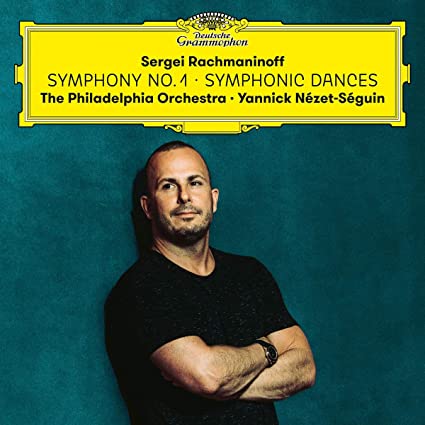
ESSENTIAL RECORDINGS

Symphony No. 1 in D minor, Op. 13 Symphonic Dances, Op. 45
A promising start to a new projected recording cycle of all three symphonies and other incidental orchestral works by Sergei Rachmaninov (1873-1943). A recording of Symphony No. 2 and The Isle of the Death is due for release in 2022, and the Symphony No. 3 and The Bells is slated to be released in 2023, in time to commemorate the 150th anniversary of Rachmaninov's birthday. I was expecting to hear more of the inflated sentimental bloat highly present in this conductor's account of the Piano Concertos with pianist Daniil Trifonov released in the fall of 2018 and 2019, but this time around, there's a nimble agility to the underlying rhythmic pulse of the faster passages, and a fervid intensity to the slower, more passionate segments. The detail and clarity of orchestral textures emanating from the Philadelphia Orchestra members is to be commended. I've heard some accounts that would turn to molasses during the denser moments.
The shadow of Tchaikovsky looms large over this 1897 Symphony No. 1 in D minor, Op. 13. So much so that the scherzo Allegro animato movement sounds like it could be a segment of a ballet, and conductor Yannick Nézet-Séguin treats it as such and lends it a fleet-footed character. And the powerful march that opens the final movement, sometimes performed as if a heavy military manoeuvre, actually sparkles with a brisk tempo, and bright and crisp trumpets in this account. The final three minutes glow with energy. I must say that my one and only niggle is that the clarinet which comes in at the 30 second mark of the first movement and sets the tone for the whole symphony, sounds a bit too swaddled within the orchestral fabric to be effective. But overall this is an impressive reading of a much overlooked symphony.
The Symphonic Dances, Op. 45 was given its premiere in 1941 with the Philadelphia Orchestra under the direction of Eugene Ormandy. It was composed while Rachmaninov lived in the United States, and was to be his last orchestral work. Its three movements are said to represent adolescence, adulthood and old age in a person's life. The orchestration includes the effective use of an alto saxophone. And are those jazz-like sounding chords we hear at the start of the second movement? Yannick Nézet-Séguin once again brings out its innovative orchestration touches, as well as its conflicting moods and colors. When the sky suddenly darkens in the final movement is very well done (thumbs up to the bassoon player in particular). And the emotive turbulence at the very end, so typical to Rachmaninov, is well executed by the Philadelphia Orchestra, in this clear and dynamic recording.
Jean-Yves Duperron - February 2021